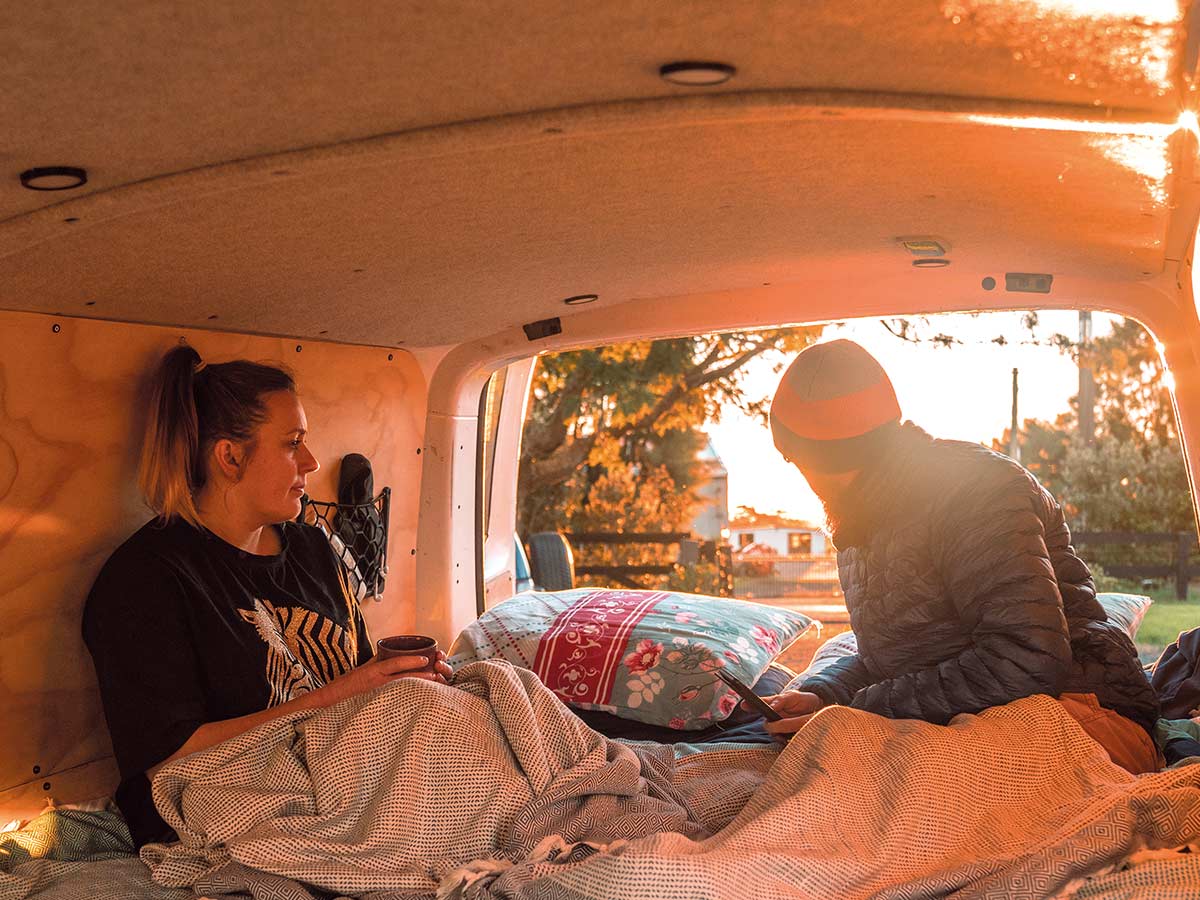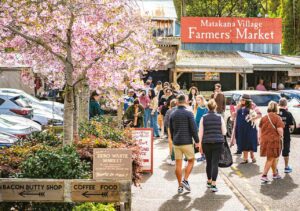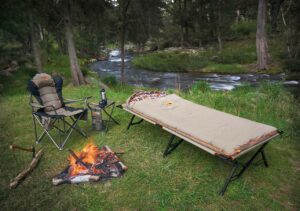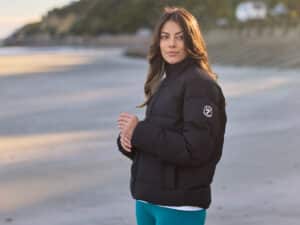A cycling accident that resulted in a head injury changed Debra Brockelsby’s life in more ways than one. Faced with an unpredictable recovery came a renewed desire to make the most of life and create the time and opportunity to do the things she and her partner Gary enjoyed. Part of that change was converting a former painter’s van into a new home away from home. Lisa Potter finds out more.
And so began a dual adventure of van life and a new business, the idea for which was sparked by enjoying activities such as camping, mountain biking, beach days, and hiking adventures.
“We’re all about creating unforgettable memories, adventuring with friends and family, and living life with purpose,” says Debra.
“After my head injury, I realised life can be super short and can change in an instant. From the start, we wanted to build a business that would allow us to work remotely from the van or anywhere in the world.
“Last year, we worked from the South Island for almost seven weeks in between riding bikes, hiking, and swimming, then six-and-a-half weeks in the UK (seeing Gary’s family), Turkey (visiting our makers) and Greece, working and adventuring at the same time.
“Our dream is to spend summers in New Zealand working from our van and summers in Europe exploring, riding bikes, and working.”
For Debra, pre-accident, her dream life was tied up in her role as a performance analyst at Cycling New Zealand.
“That was my dream job. I travelled the world with the team, but my own tiny bike crash had huge consequences on my life and forced me to think about what I wanted. If I didn’t get tomorrow, was I doing epic things that truly set my heart on fire?
“I had first-hand experience of just how quickly life can change. That it can be short and that you only get one shot.”
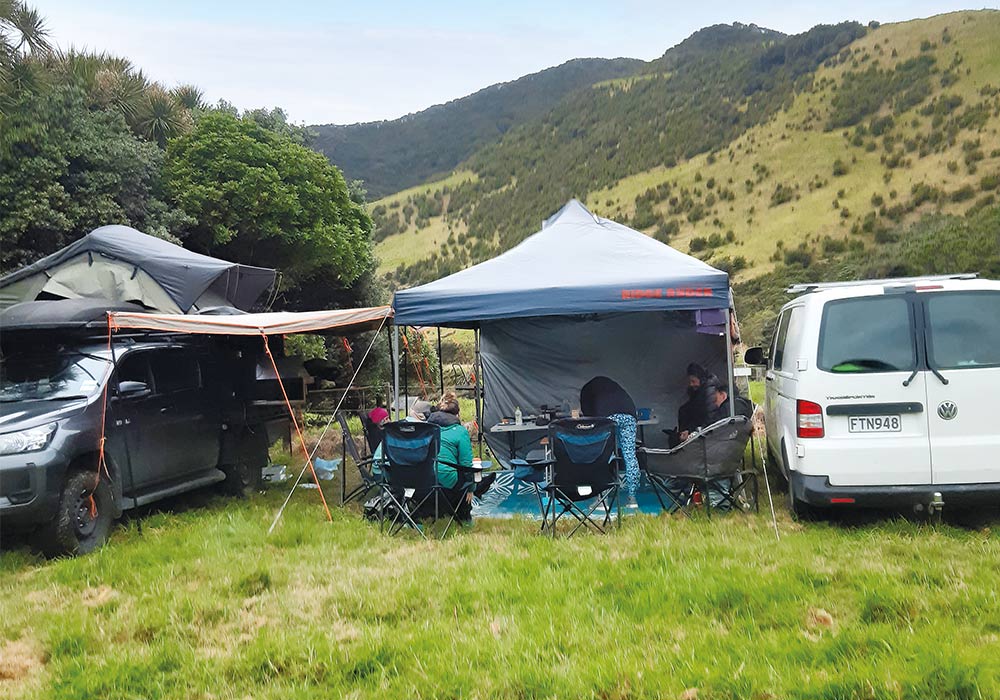
Part of this life rethink to dedicate time to experiences she and Gary enjoyed sparked the business idea for STOKEDNZ: 100% Turkish cotton hooded towel ponchos, which double as a layer of warmth, an actual towel, and as a portable changing room on the side of the beach or post mountain bike ride in the forest.
“During my recovery, I craved my independence, I craved nature, and doing adventures with my buddies, like surfing, mountain biking, lake swims, hikes – all the good stuff. I’d always had a towel poncho for these things, but it was just a bit crap – didn’t actually dry you, was microfibre, and if you sat on the grass, everything would stick to it. So, I set about finding a solution.”
The idea was so successful that STOKEDNZ has expanded to include wet bags and homewares, all aimed at those who enjoy camping, van life, and motorhoming. And in a perfect full circle moment, the VW Transporter van Debra and Gary travel around New Zealand in also doubles as a work van when required, with clever design allowing for dual purpose. As well as the business stokednz.co.nz offering a different way of life for Debra, it doubles down on satisfaction by the fact she has been able to donate tens of thousands of dollars to underfunded charities such as women’s refuge.
“Every year when businesses are doing sales like there’s no tomorrow during Black Friday, we hold tight on our values. We don’t do sales but instead, donate a percentage of sales to buying safe nights for women in need. We’ve raised 356 safe nights over the past few years.
“I’m all about living life on my terms and my business is an extension of that, and that’s really epic.”
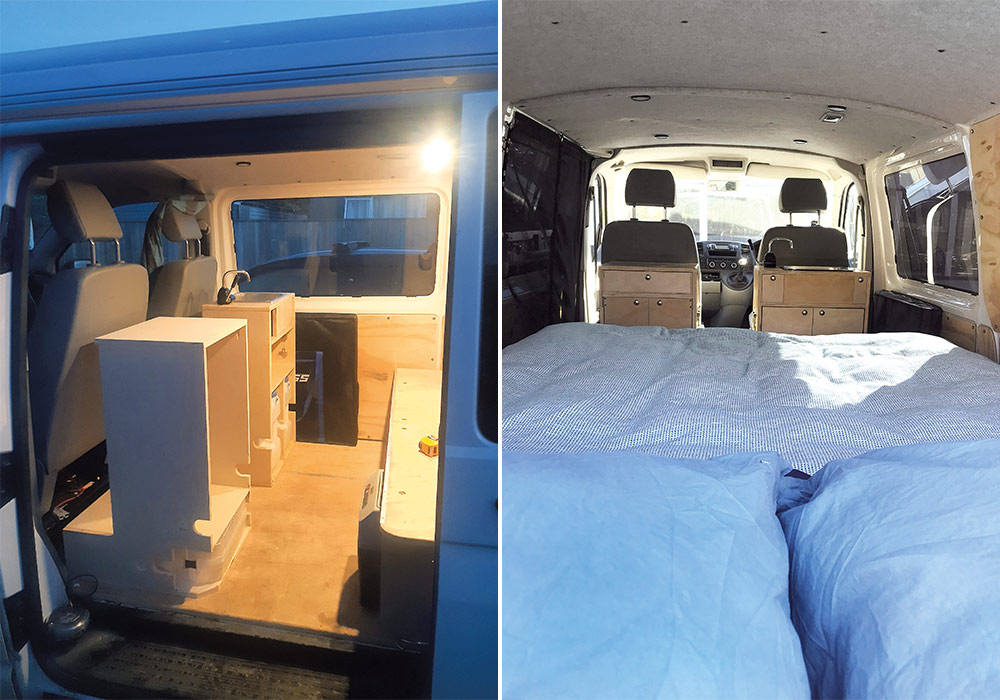
Right: The finished van complete with fly screens, magnetic curtains, and a lush STOKEDNZ cotton blanket
When not travelling or spending time in their van, Debra and Gary immerse themselves in the delights of their home near Rotorua, with daily swims in Lake Okareka throughout summer and regular mountain bike rides. Their self-built van has, however, become central to their new lifestyle and also represents Gary’s design and construction expertise.
“I’ve probably gone overboard in construction, but it’s paying back in durability,” admits Gary.
“Every wood joint is screwed and glued, and all the drawer rails are bolted in with stainless bolts with thread locker. We’ve put more than 100k on our van since we’ve had it and nothing has rattled loose or broken yet; it’s a workhorse, not a show pony.
“I cannot overstate how helpful having everything drawn in CAD was – it allowed me to squeeze everything in, for example, our toilet fits in with a few millimetres to spare. We’ve maximised everything down to the millimetre.”
The finished result anchors both their travel goals and the needs of the business, which involves travelling a van full of STOKEDNZ stock to shows and events around New Zealand.
“When we’re camping, we have a pod behind the driver’s seat that has fresh and wastewater tanks and a sink. Behind the passenger seat is a pod with food and cooker storage.
“The main bed frame has two 1.1-metre drawers that slide out the back. These carry clothes, etc. when we’re camping but are built heavily enough to carry market equipment (we can stand on the drawers at full extension). There are also spaces for our fridge, toilet, and food. If we’re moving stock around the country, the entire bed base can be removed, and the van is a shell again.”
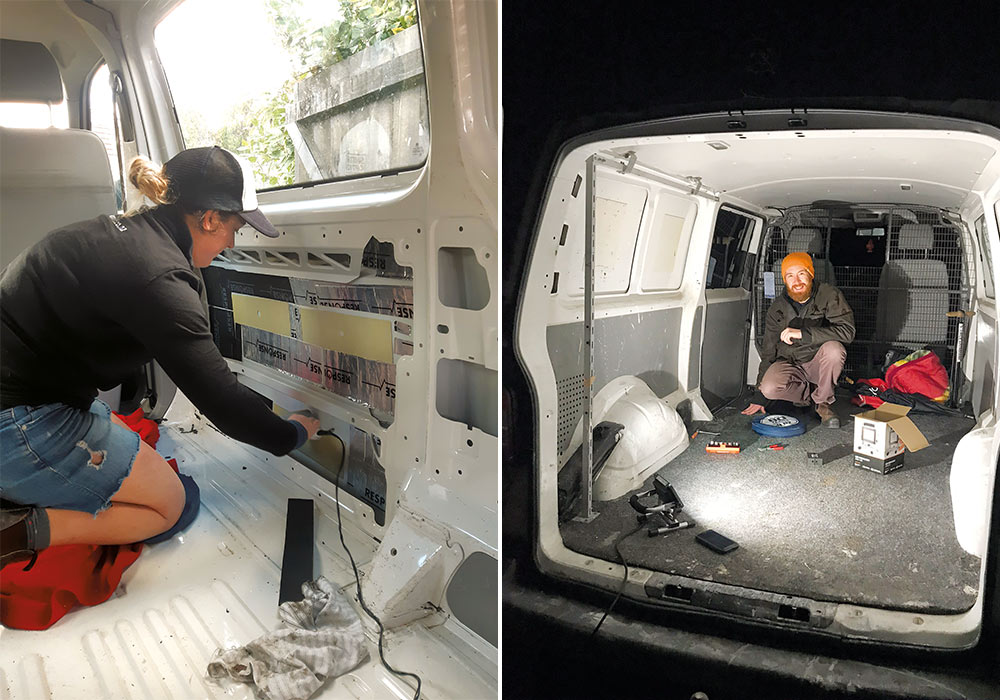
Right: The ‘new’ van arrives and Gary is straight into action transforming it
MCD finds out more about Debra’s travels and advice around living the van life.
What are your early holiday memories?
Mum and Dad bought an old-school Bedford bus and converted it to a self-contained bus. My sister and I were still at primary school when Dad built it, but our coolest trip was three weeks around the East Cape staying at DOC sites.
What sparked the idea to buy a van?
We needed a van for when we attend events around the country with the business. Luckily for me, Gary is an engineer. He built one that works for business life and fully contained van life (the entire fitout is removable, which is super handy).
What did you buy and what sort of shape was it in?
We bought a VW Transporter (T5) from a painter in Auckland. As you can imagine, it was covered in paint. We fully gutted it and spent hours insulating it, which I resented at the time. But it’s 100% warmer and better insulated even than our house. We spent three weeks in May in Christchurch with no heater and were toasty warm.
Having done this van reno, what’s your advice to others?
Spend the time and money on decent insulation. Ours has three layers and it’s lush to sleep in. Tint your windows; it makes a huge difference. Make decent curtains. Ours don’t look like curtains; they are made from similar materials that we insulated the van with and they make a big difference.
Were there any curve balls with the project?
We blew up two inverters while rushing to install them the night before the ferry crossing for our first trip. In Gary’s defence, he was sleep deprived and had the polarity backwards somewhere down the wiring loom.
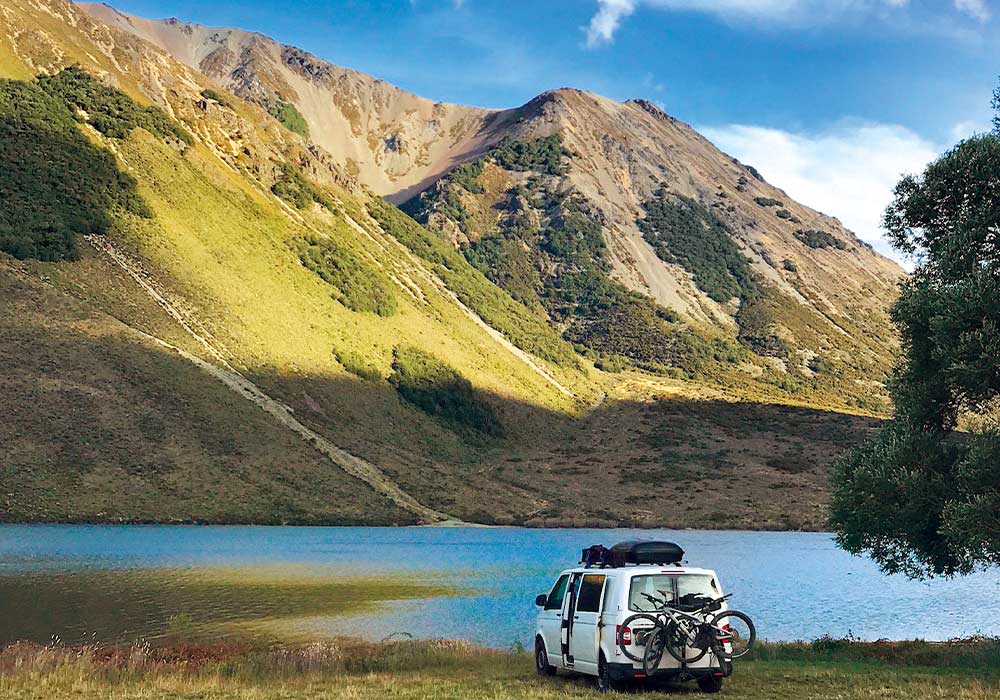
What was involved in your initial planning stages?
Countless hours online exploring other people’s van builds for inspiration. Gary drew his own version on 3D design software. As we wanted a lot from a small van, we had to squeeze every last millimetre out of it. Thankfully, Gary has been a design engineer for more than a decade, so this was nothing new to him.
How did designing a van with two purposes add to the challenge?
Everything had to be removable, or if it was left in place (the bed base and drawers) they had to be robust enough to withstand the rigours of a summer market tour, so it was very much a function-over-form build. Gary spent the majority of his career designing or field-testing farm machinery, so leans strongly towards that design style anyway. Once he worked out, he could put threaded inserts into the plywood floor and then bolt whatever he wanted to it, which changed the direction of the design.
What’s some key advice you would share?
Don’t get seduced by shiny European builds. The key to making anything in New Zealand is ensuring you can source the components before committing to a certain direction. Also, know when to stop when a problem is beating you; a five-minute break really helps with problem-solving.

